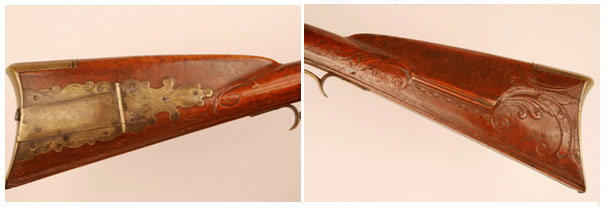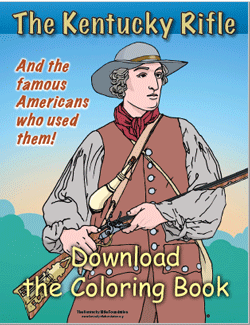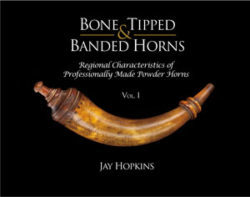School: Berks (Pennsylvania/PA)
The Angstadt family of gun makers is the dynasty of makers in Berks County. The family consisted of ten craftsmen who made complete rifles for over 100 years. Centered primarily in Maxatawny, Greenwich, and Long Swamp Townships and the Kutztown area the family consisted of:
Adam 1st. – 1740 -1812
Peter Angstadt 1st. – 1738 – 1782
Peter Angstadt II – 1763 -1815
Joseph Angstadt – 1765 – ?
Jacob Angstadt – 1783 -1843
Joseph Angstadt II – 1817 – 1872
Abraham Angstadt – 1784 – 1868
Peter Angstadt III – 1807 – 1870
Adam Angstadt II – 1821 – 1888
Although each of the Angstadt makers had their own style, similarities can be found and most Angstadt rifles are readily identified after some study. A common characteristic of their design could be defined as Pennsylvania “Dutchy”, with many of their guns as much folk art as firearm. Design motifs seen on some Angstadts have included unusual stars, flowers, lions and even hex signs, along with unique patch box designs.










